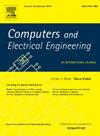Maximizing solar energy efficiency: Optimized DC power conversion for resistive loads
IF 4
3区 计算机科学
Q1 COMPUTER SCIENCE, HARDWARE & ARCHITECTURE
引用次数: 0
Abstract
This paper investigates the integration of photovoltaic (PV) energy systems with a DC power converter based on a boost converter designed to optimize the power output for resistive loads such as heat elements for heat generation applications. Emphasizing the role of boost converters in increasing the output voltage of PV systems to efficiently supply resistive loads, the performance and efficiency of this integration is evaluated. The work also addresses the basic principles, control strategies and efficiency considerations associated with the fusion of solar PV systems with synchronous boost converters for resistive load applications. The results demonstrate a peak efficiency of 97%, which decreases to 90.5%, 87.5%, and 84% for resistive loads of 10Ω, 15Ω, and 20Ω, respectively at 80W and for a switching frequency of 60KHz. This indicates that efficiency declines as the value of the resistive load increases. Additionally, the results exhibit a notable efficiency increase of 4.6% by simply raising the switching frequency from 20KHz to 100KHz. Through extensive testing, we have substantiated the effectiveness of employing synchronous boost converters to optimize power output and enhance the overall performance of PV systems when supplying resistive heat elements.
最大限度地提高太阳能效率:优化电阻负载的直流电源转换
本文研究了光伏(PV)能源系统与直流电源转换器的集成问题,直流电源转换器基于升压转换器设计,旨在优化电阻性负载(如制热应用中的热元件)的功率输出。该研究强调升压转换器在提高光伏系统输出电压以有效供应电阻负载方面的作用,并对这种集成的性能和效率进行了评估。该研究还探讨了太阳能光伏系统与同步升压转换器融合用于阻性负载应用的基本原理、控制策略和效率考虑因素。结果表明,在 80W 和开关频率为 60KHz 时,峰值效率为 97%,当电阻负载为 10Ω、15Ω 和 20Ω 时,效率分别降至 90.5%、87.5% 和 84%。这表明效率随着电阻负载值的增加而下降。此外,结果表明,只需将开关频率从 20KHz 提高到 100KHz,效率就会显著提高 4.6%。通过广泛的测试,我们证实了采用同步升压转换器优化功率输出和提高光伏系统整体性能的有效性。
本文章由计算机程序翻译,如有差异,请以英文原文为准。
求助全文
约1分钟内获得全文
求助全文
来源期刊

Computers & Electrical Engineering
工程技术-工程:电子与电气
CiteScore
9.20
自引率
7.00%
发文量
661
审稿时长
47 days
期刊介绍:
The impact of computers has nowhere been more revolutionary than in electrical engineering. The design, analysis, and operation of electrical and electronic systems are now dominated by computers, a transformation that has been motivated by the natural ease of interface between computers and electrical systems, and the promise of spectacular improvements in speed and efficiency.
Published since 1973, Computers & Electrical Engineering provides rapid publication of topical research into the integration of computer technology and computational techniques with electrical and electronic systems. The journal publishes papers featuring novel implementations of computers and computational techniques in areas like signal and image processing, high-performance computing, parallel processing, and communications. Special attention will be paid to papers describing innovative architectures, algorithms, and software tools.
 求助内容:
求助内容: 应助结果提醒方式:
应助结果提醒方式:


